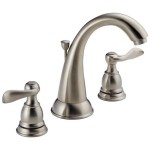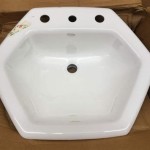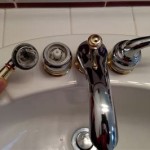Bathroom Sink Fixture Pipe Size: A Comprehensive Guide
The selection of the appropriate pipe size for your bathroom sink fixture is a crucial aspect of plumbing installation. It directly affects the water pressure and flow rate, impacting the overall functionality of your sink. Choosing the wrong pipe size can lead to issues like low water pressure, slow drainage, or even damage to the fixture itself. This guide provides a comprehensive understanding of bathroom sink fixture pipe sizes, explaining the factors to consider and the best practices for selecting the right size.
Understanding Pipe Size and Its Impact
Pipe size refers to the internal diameter of the pipe, typically measured in inches. The standard measurement for bathroom sink fixture pipes is expressed in fractions of an inch, such as 1/2 inch or 3/4 inch. The larger the pipe diameter, the greater the capacity to carry water. This directly translates to higher water pressure and flow rate. However, excessively large pipes can lead to increased water usage and potential noise problems.
Here's how pipe size impacts your bathroom sink fixture:
- Water Pressure: A larger pipe size ensures ample water flow, contributing to higher water pressure. This is especially important for fixtures requiring high water pressure, such as showerheads or faucets with multiple outlets.
- Flow Rate: The volume of water flowing through the pipe is directly influenced by the pipe size. A larger pipe allows for greater water flow, enabling faster filling of sinks and quicker drainage.
- Noise: In some cases, larger pipes can create more noise as water flows through them due to increased water velocity.
Factors to Consider When Determining Pipe Size
Choosing the right pipe size for your bathroom sink fixture involves evaluating several factors:
1. Fixture Type and Usage
The specific type of bathroom sink fixture plays a significant role in determining the appropriate pipe size. For instance:
- Standard bathroom sink faucets: Typically, a 1/2 inch pipe is sufficient for standard bathroom sink faucets. These fixtures require moderate water pressure and flow for everyday use.
- High-flow or multi-outlet faucets: For faucets with multiple outlets or requiring higher water pressure, a 3/4 inch pipe might be more suitable to ensure adequate water flow and pressure to all outlets.
- Showerheads: Showerheads often require a 3/4 inch pipe for optimal water pressure and flow, especially for larger or multi-function showerheads.
2. Water Pressure in Your Home
The existing water pressure in your home is a critical factor in determining the right pipe size. If you have low water pressure, a larger pipe size could help compensate and improve the water flow in your bathroom sink fixture. However, if your water pressure is already high, a larger pipe size could lead to excessive pressure, potentially causing damage to the fixture or even flooding.
3. Distance from Water Source
The distance between the bathroom sink fixture and the water source also influences the required pipe size. Longer distances can result in reduced water pressure due to friction losses within the pipe. A larger pipe size can minimize these friction losses, ensuring adequate water pressure even at greater distances.
4. Existing Plumbing System
The existing plumbing system in your home should also guide the selection of pipe size. If your bathroom sink is connected to the main water supply line via smaller pipes, it might be necessary to enlarge the pipe size leading to the fixture to avoid constricting the water flow.
Best Practices for Selecting the Right Pipe Size
When selecting the pipe size for your bathroom sink fixture, it's important to follow some best practices:
- Consult a professional plumber: A qualified plumber has the expertise to assess your home's water pressure, plumbing system, and fixture needs to recommend the optimal pipe size for your bathroom sink.
- Consider future upgrades: If you anticipate future upgrades to your bathroom sink fixture, such as a high-flow faucet or a larger showerhead, it's wise to install a larger pipe size initially to accommodate potential changes.
- Avoid oversizing: While a larger pipe can provide higher water pressure, it may not be necessary and could lead to increased water usage and potential noise issues.
By carefully considering these factors and following best practices, you can ensure that your bathroom sink fixture receives the appropriate water pressure and flow rate for optimal functionality and longevity.

What Size Are Faucet Supply Lines For All Faucets Tck

What Size Pipe For Sink Drain Choosing Tips

Pin On Plumbing

Aa Faucet 143 Stainless Steel Bar Sink Drain 1 Nominal Pipe Size 1234buy Com

This Image To Show The Full Size Version Sink Plumbing Kitchen Diy

Bathroom Sink P Traps Sanliv Sanitary Wares

What Size Pipe For Sink Drain Choosing Tips

Sink Basin Pipe Furniture Home Living Bathroom Kitchen Fixtures On Carou

What Are The Code Requirements For Layout Of Drain Piping Under Sinks Sink Plumbing Diagram

How To Vent A Toilet Sink And Shower Drain
Related Posts







